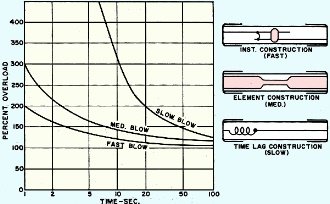C
calumr135
I know it sounds ridiculous but I don't think they really do. I have known fuses to take twice their rating capacity for quite some time before finally blowing. Best one is the very common main 60 amp cut out fuse in your normal household with the service cable only rated around 80 ish max, if the 60 amp main fuse can take 100 amps or slightly more for half an hour its not really protecting the cable against overload is it? Shorting the meter tails which I don't recommend would blow main fuse instantly however.
Another example which is very common in houses is when your dishwasher and washing machine are on the same 13 fused spur I have that set up myself, both dishwashers and washing machines are either 2kw or 3kw, add them together and they are in excess of 13 amps yet the fuse doesn't blow. There has been quite a lot of times over the years and still is where my dishwasher and washing were both on at the same time with both elements drawing heat and never once has the 13 amp fuse blown, for the record they both 3kw!. surely the 2.5mm cable would be getting pretty hot yet the fuse doesn't seem bothered.
Extension leads are also common where if you exceed 13 amps the fuse won't blow at least for a while or at all.
I believe fuses are more to protect against direct short circuits rather than overloads. Most fuses I have seen and tested can take over twice their rating.
Your opinions are welcome. Share your knowledge and experience.
Another example which is very common in houses is when your dishwasher and washing machine are on the same 13 fused spur I have that set up myself, both dishwashers and washing machines are either 2kw or 3kw, add them together and they are in excess of 13 amps yet the fuse doesn't blow. There has been quite a lot of times over the years and still is where my dishwasher and washing were both on at the same time with both elements drawing heat and never once has the 13 amp fuse blown, for the record they both 3kw!. surely the 2.5mm cable would be getting pretty hot yet the fuse doesn't seem bothered.
Extension leads are also common where if you exceed 13 amps the fuse won't blow at least for a while or at all.
I believe fuses are more to protect against direct short circuits rather than overloads. Most fuses I have seen and tested can take over twice their rating.
Your opinions are welcome. Share your knowledge and experience.
Last edited by a moderator:



